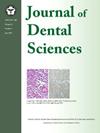Single-cell isolation reveals 5 fluorouracil-resistant subclones in oral squamous cell carcinoma: New insights into stemness and epithelial–mesenchymal transition for targeted therapies
IF 3.1
3区 医学
Q1 DENTISTRY, ORAL SURGERY & MEDICINE
引用次数: 0
Abstract
Background/purpose
Oral squamous cell carcinoma (OSCC) often recurs and has poor clinical outcomes, partly attributable to subpopulations that develop resistance to 5 fluorouracil (5FU). Elucidating how these resistant clones emerge and drive tumour aggressiveness is essential for improving OSCC treatment approaches.
Materials and methods
To establish 5FU-resistant cells, SCC25 cells were repeatedly exposed to 5FU, and single-cell clones were subsequently isolated using a microfluidic system. Three subclones-Holoclone, Meroclone, and Paraclone-were evaluated for their 5FU responses, expression of drug-efflux pumps (ABCB1, ABCG2), and resistance in three-dimensional (3D) cultures. Their levels of cancer stem cell (CSC) markers (OCT4, SOX2, CD44, CD133) and epithelial–mesenchymal transition (EMT) markers (E-cadherin, Vimentin, Twist) were also examined. In addition, Transwell assays were performed to assess migration and invasion.
Results
Compared with parental SCC25 cells, the three subclones exhibited markedly higher resistance to 5FU under 3D spheroid conditions, concurrent with upregulated ABCB1 and ABCG2 expression. All three subclones showed enhanced sphere-forming capacity and increased OCT4 and SOX2 levels, consistent with higher proportions of CD44+/CD133+ cells. Moreover, Holoclone, Meroclone, and Paraclone each displayed reduced E-cadherin alongside elevated Vimentin, and Twist, characteristic of EMT. Transwell assays confirmed increased migration and invasion, with Holoclone and Paraclone exhibiting particularly pronounced effects.
Conclusion
Extended 5FU treatment in OSCC selects for distinct subclones that exhibit CSC-like traits and EMT-related motility, promoting robust chemoresistance and heightened malignancy. These findings emphasise the importance of developing comprehensive therapeutic strategies that simultaneously target drug-efflux mechanisms, CSC markers, and EMT pathways to more effectively control OSCC progression.
单细胞分离揭示了口腔鳞状细胞癌中5个氟尿嘧啶耐药亚克隆:靶向治疗的干细胞和上皮-间质转化的新见解
背景/目的口腔鳞状细胞癌(OSCC)经常复发,临床预后差,部分原因是亚群对5氟尿嘧啶(5FU)产生耐药性。阐明这些耐药克隆如何出现并驱动肿瘤侵袭性对于改善OSCC治疗方法至关重要。材料和方法为了建立抗5FU细胞,将SCC25细胞反复暴露于5FU,随后使用微流体系统分离单细胞克隆。三个亚克隆——holoclone、Meroclone和paraclone——在三维(3D)培养中评估了它们的5FU反应、药物外排泵(ABCB1、ABCG2)的表达和耐药性。他们的癌症干细胞(CSC)标志物(OCT4, SOX2, CD44, CD133)和上皮-间质转化(EMT)标志物(E-cadherin, Vimentin, Twist)水平也被检测。此外,还进行了Transwell试验来评估迁移和入侵。结果与亲本SCC25细胞相比,3个亚克隆在三维球体条件下对5FU的抗性明显增强,同时ABCB1和ABCG2的表达上调。所有三个亚克隆均表现出增强的球形形成能力和增加的OCT4和SOX2水平,与CD44+/CD133+细胞比例较高一致。此外,Holoclone、Meroclone和Paraclone均显示E-cadherin减少,Vimentin和Twist升高,这是EMT的特征。Transwell实验证实了迁移和入侵的增加,全息克隆和仿克隆表现出特别明显的影响。结论延长5FU治疗OSCC可选择具有csc样特征和emt相关运动的不同亚克隆,促进强大的化疗耐药和恶性程度升高。这些发现强调了开发综合治疗策略的重要性,这些策略同时针对药物外排机制、CSC标志物和EMT途径,以更有效地控制OSCC的进展。
本文章由计算机程序翻译,如有差异,请以英文原文为准。
求助全文
约1分钟内获得全文
求助全文
来源期刊

Journal of Dental Sciences
医学-牙科与口腔外科
CiteScore
5.10
自引率
14.30%
发文量
348
审稿时长
6 days
期刊介绍:
he Journal of Dental Sciences (JDS), published quarterly, is the official and open access publication of the Association for Dental Sciences of the Republic of China (ADS-ROC). The precedent journal of the JDS is the Chinese Dental Journal (CDJ) which had already been covered by MEDLINE in 1988. As the CDJ continued to prove its importance in the region, the ADS-ROC decided to move to the international community by publishing an English journal. Hence, the birth of the JDS in 2006. The JDS is indexed in the SCI Expanded since 2008. It is also indexed in Scopus, and EMCare, ScienceDirect, SIIC Data Bases.
The topics covered by the JDS include all fields of basic and clinical dentistry. Some manuscripts focusing on the study of certain endemic diseases such as dental caries and periodontal diseases in particular regions of any country as well as oral pre-cancers, oral cancers, and oral submucous fibrosis related to betel nut chewing habit are also considered for publication. Besides, the JDS also publishes articles about the efficacy of a new treatment modality on oral verrucous hyperplasia or early oral squamous cell carcinoma.
 求助内容:
求助内容: 应助结果提醒方式:
应助结果提醒方式:


